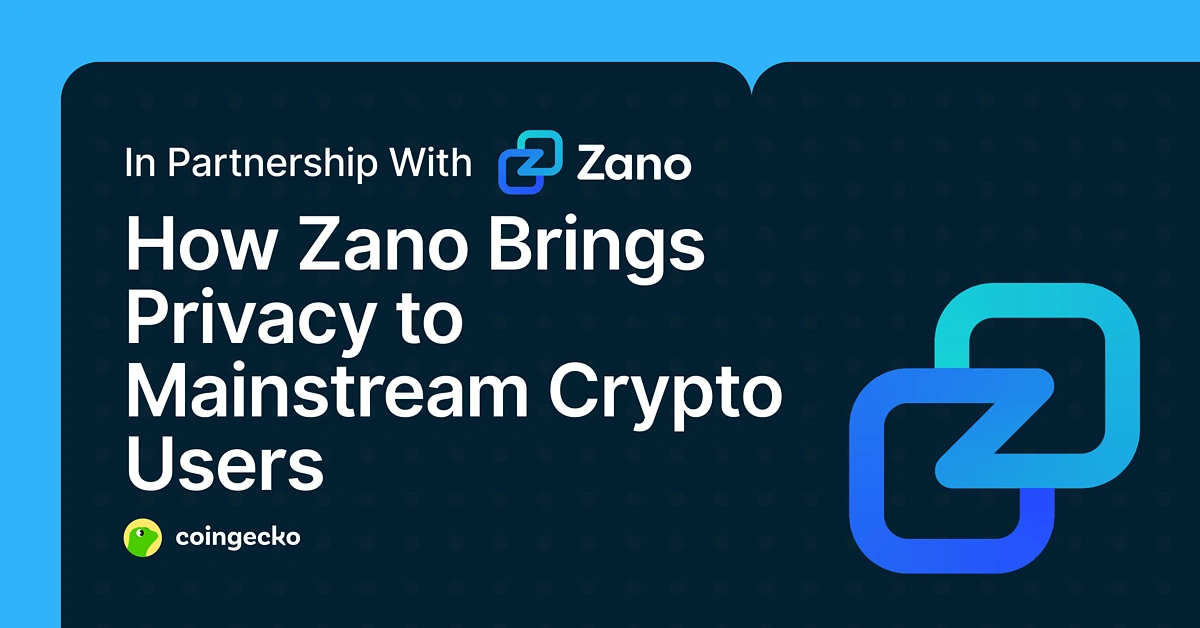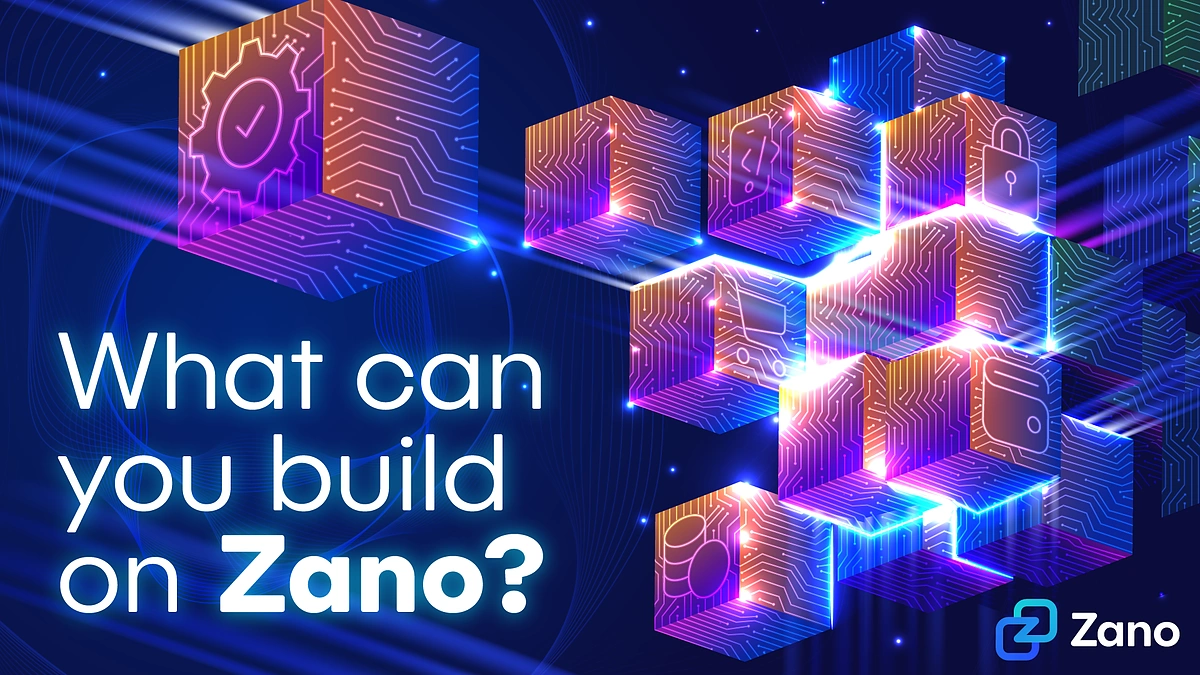Zano Overview
Zano is an open-source privacy-focused blockchain platform that combines enterprise-grade confidential transactions with specialized smart-contract like modules, enabling developers to build privacy-preserving decentralized applications and confidential assets.
Key Points:
-
World’s First Private Proof-of-Stake: Zano’s Zarcanum protocol is the first PoS consensus mechanism that conceals staking amounts while maintaining network security through a hybrid PoW/PoS system, protecting both transactional and staking privacy. Transactions also arrive instantly, which is ideal for use in real-world commerce.
-
Privacy Platform, Not Just a Privacy Coin: Unlike Monero or Zcash, Zano functions as a full blockchain platform with Confidential Assets technology, allowing developers to create privacy-preserving tokens, stablecoins, NFTs, and dApps that inherit protocol-level privacy features.
-
Built by the CryptoNote’s Codebase Creator: Led by Andrey Sabelnikov, who is the lead developer behind the original CryptoNote protocol code that powers Monero and hundreds of other privacy cryptocurrencies, Zano represents the evolution of privacy blockchain technology designed for mainstream adoption.

As crypto adoption grows, the industry faces a privacy paradox—blockchains promise financial freedom but expose every transaction. Zano addresses this with enterprise-grade privacy technology that doesn’t sacrifice usability, offering a practical path toward private, censorship-resistant digital finance for individuals and institutions alike.
The Fading Promise of Cypherpunk Ideals
Bitcoin’s earliest appeal centered on its cypherpunk ethos—the idea that cryptography could return financial sovereignty to individuals. The original vision promised pseudonymous transactions through cryptographic addresses and a community-controlled currency free from centralized oversight.
However, this vision has faded. Today’s crypto landscape looks dramatically different. Major exchanges require extensive KYC verification before users can access basic services. New blockchain platforms prioritize transaction speed and low costs over privacy, resulting in fully auditable transaction histories. Privacy-focused cryptocurrencies face regulatory scrutiny and struggle to secure exchange listings.
The infrastructure that was meant to liberate financial activity now often mirrors—or exceeds—the surveillance capabilities of traditional finance.
Privacy Is Not Optional—It’s Financial Security
The narrative around financial privacy has been distorted. Privacy isn’t about concealing illicit activity; it’s about maintaining control over personal information. Just as you wouldn’t want your salary, investment portfolio, or charitable donations publicly visible to neighbors, businesses and individuals need basic transactional confidentiality.
The risks of financial transparency are real:
-
Targeted scams: Public transaction histories allow bad actors to identify and target high-value wallet holders
-
Corporate espionage: Competitors can analyze business transaction patterns and strategic partnerships
-
Physical safety threats: Visible wealth concentration creates security risks, from wrench attacks to kidnapping
Traditional finance recognizes this reality—banks don’t publish customer account balances or transaction histories. Yet many blockchain networks, ironically, offer less privacy than the centralized systems they aim to replace.
The Regulatory Lens: Transparency ≠ Trust
Regulatory bodies often frame complete transaction transparency as essential for preventing financial crime. The argument suggests that access to full transaction histories helps trace fraudulent activity and money laundering.
This approach has limitations. Bad actors have adapted using transaction mixers, peer-to-peer transfers, private escrows, and off-chain methods to move funds. Meanwhile, transparency requirements primarily affect law-abiding users, who lose privacy without meaningful gains in security. The system punishes honest users while sophisticated criminals find workarounds.
The Existing Privacy Landscape
Several blockchain projects have attempted to solve the privacy challenge, each with distinct trade-offs.

Monero: Strong Privacy, Limited Versatility
Monero achieves privacy through ring signatures, stealth addresses, RingCT that hides the transaction amounts, and the Dandelion++ protocol that obscures the IP address of a transaction’s origin. These technologies enforce mandatory transaction privacy and maximize anonymity.
However, limitations exist:
-
Regulatory pushback due to mandatory privacy features
-
Difficult to scale for broader use cases
-
Lacks programmability functionality, preventing developers from building decentralized applications or creating tokens on the network. While Monero has discussed potential smart contract additions to circumvent this, there is no clear plan around integrating programmability features.
Zcash: Optional Privacy Creates Adoption Challenges
Zcash enables privacy through zero-knowledge proofs (zk-SNARKs) and shielded addresses. Unlike Monero, privacy on Zcash is optional—users can choose transparent or shielded transactions.
This flexibility has drawbacks:
-
Most users opt for transparent transactions due to lower computational costs and broader compatibility
-
Optional privacy limits network-wide privacy guarantees (smaller anonymity set)
-
Shielded transactions face limited exchange support.
Building sustainable privacy solutions remains an ongoing challenge. Zano represents a newer approach that aims to balance strong privacy with practical usability.
What Is Zano: Privacy Built for Real-World Utility

Zano is an open-source Layer 1 blockchain designed with foundational transactional privacy and programmability capabilities. Unlike single-purpose privacy coins, Zano functions as a platform where developers can build privacy-focused decentralized applications.
The project rebranded to Zano in 2019 after operating as Boolberry since 2014. The development team is led by Andrey Sabelnikov, who created the original CryptoNote protocol code—the privacy technology that powers Monero and hundreds of other cryptocurrencies.
Zano’s stated mission is to “revolutionize blockchain by adding the missing privacy component that makes crypto fungible, maximizing security for the end-user, and driving mass adoption for the Zano ecosystem.”
What sets Zano apart: The platform is designed for compatibility with current applications while remaining flexible enough for future blockchain use cases—positioning itself for large-scale adoption rather than niche applications.
Key Features of Zano
Here are the key features of Zano and how they ensure privacy for users.
Ring Signatures (dv-CLSAG)
The dv-CLSAG (different/variable Concise Linkable Spontaneous Anonymous Group) ring signature scheme represents a core upgrade introduced in Zano’s Zarcanum hard fork, completed in March 2024.
This evolution of the original CryptoNote protocol mixes users’ transactions with decoy transactions from the blockchain, making individual transactions untraceable. The “different/variable” aspect allows for flexible anonymity sets, enhancing privacy without sacrificing performance.
Stealth Addresses
Zano generates a new address for each transaction, derived from users’ public keys. This prevents external parties from linking transactions to specific recipients, ensuring that even if someone knows your Zano address, they cannot view your transaction history or current balance.

Combined with ring signatures and account privacy (via Bulletproofs+ technology), these features ensure fully private transfers. According to Zano’s documentation, transaction data is stored such that only the person who executed the transaction can see their own data—private data never appears publicly on the blockchain.
Confidential Assets
Zano supports tokenization, allowing anyone to issue tokens on the network. These tokens inherit Zano’s base privacy technologies, making all token transactions untraceable.
While Confidential Assets are less programmable than tokens on smart contract platforms, they are more secure and easier to use. According to Zano, they are working on improving the versatility of Confidential Assets so they can be made more programmable.

With Confidential Assets, developers can build applications like:
-
Private stablecoins
-
Tokenized stocks and securities
-
Privacy-focused NFTs
-
Confidential governance tokens
-
Wrapped privacy versions of any existing assets
Decentralized Marketplace and Escrow
Zano implements on-chain, permissionless, trustless trading through customizable Escrow Trades. These allow parties to define conditions for two-way asset exchanges on the Zano blockchain without intermediaries.
The escrow system supports automated transaction agreements, making it possible to build decentralized marketplaces and peer-to-peer trading platforms with built-in privacy.
Hybrid Consensus Algorithm (PoW + PoS)
Zano’s hybrid Proof of Work (PoW) and Proof of Stake (PoS) consensus mechanism alternates between PoW and PoS blocks. According to the project, this hybrid approach provides:
1. Enhanced Network Security
Dual-layer protection: Both miners and stakers participate in block creation, making it far harder for any single entity to control the network.
Attack resistance: To compromise Zano, an attacker would need both a majority of mining power and a majority of stake—drastically increasing the cost and difficulty of attacks.
2. Fair Reward Distribution
PoW miners earn block rewards for computational contribution (via ProgPoWZ, an ASIC-resistant algorithm).
PoS stakers earn rewards for helping secure the network by putting their coins to work and participating in consensus—no minimum balance, no slashing, no lock-up period.
3. Decentralization and Participation
Inclusive design: Anyone can contribute—GPU miners secure the chain, while regular users can stake their coins to contribute.
Low entry barrier: No expensive hardware or centralized custodial staking pools required.
Zarcanum Protocol: Private Staking
Zarcanum represents a breakthrough in privacy and consensus technology—the world’s first Proof-of-Stake scheme that conceals transaction amounts. This addresses a long-standing problem: traditional PoS systems require stakers to reveal how many coins they’re staking, creating a privacy leak.
Zarcanum conceals:
-
The staked amount (via Bulletproofs+)
-
The staker’s wallet address (via stealth addresses)
-
The staking transaction itself (via ring signatures)
Staking on Zano is designed for accessibility:
-
No minimum staking amount required
-
No lock-up periods
-
No slashing penalties
-
Anyone on the network can participate
Transacting on Zano
Zano currently requires dedicated wallet software (it’s not compatible with standard multichain or EVM wallets).
Available Zano Wallets:
-
Mobile: Zano mobile wallet (iOS/Android), Cake Wallet, Edge Wallet, and Bitcoin.com wallet
-
Desktop: Native applications for Windows, macOS, and Linux
Zano Aliases
To simplify transactions, users can register memorable usernames (aliases) that represent their wallet addresses. During peer-to-peer transactions, senders can enter the recipient’s alias instead of a long cryptographic address—similar to how Venmo or Cash App use @handles.
Aliases are essentially NFT (unique tokens) tied to a user’s blockchain address at the protocol level, unlike Ethereum Name Service (ENS), which works by mapping human-readable names to machine-readable data through a smart contract registry and resolver contract.
DeFi: Ionic Swaps
Decentralized swaps on Zano are powered by Ionic Swaps, an improvement over Atomic Swap technology. Zano Trade, Zano’s own DEX, runs on Ionic Swaps, which offers users a decentralized, secure, and consistent method for trustlessly exchanging crypto assets without intermediaries.
The Zano Ecosystem

Here are some projects to watch in the Zano ecosystem:
Confidential Layer

Confidential Layer is a non-custodial interoperability protocol built on Zano. It enables bridging between public and private blockchains without altering the fundamental nature of assets.
How it works:
-
For EVM networks: Original assets are locked in smart contracts while equivalent confidential assets are minted on Zano
-
For non-programmable blockchains like Bitcoin: Original assets are locked in non-custodial wallets
-
Assets bridged to Zano inherit Confidential Asset technology
-
Threshold Signatures provide enhanced security
The assets on the native chain can be redeemed at any time, simply by burning the confidential asset on Zano that represents the native asset.
Confidential Layer currently supports Ethereum, EVM networks (Base, BNB Chain), Bitcoin, and the Zano blockchain, with plans in the roadmap to include Solana, TON, and other popular chains.
Freedom Dollar (fUSD)

Freedom Dollar bills itself as the “first private stablecoin.” It’s a dollar-pegged algorithmic stablecoin issued on Zano that inherits the blockchain’s privacy through Confidential Asset technology. FUSD is censorship-resistant; on Zano, no funds can be blacklisted or frozen, unlike centralized stablecoins like USDT and USDC.
Key features:
-
Algorithmic stability backed by over-collateralized ZANO reserves
-
Current reserve ratio: approximately 1.47:1 (reserves to issuance)
-
Redeemable for equivalent ZANO amounts at any time
-
Strong Privacy: FUSD inherits the Zano blockchain’s privacy features such as stealth addresses, ring signatures, and hidden amounts.
Since launching in May 2025, approximately $5 million fUSD has been issued. Trading is available on decentralized exchanges on Zano and centralized platforms including MEXC, Biconomy, and AscendEX.
Obscura
Obscura is an NFT tooling platform on Zano. It allows users to mint “Obscuras”—privacy-focused NFTs built on Confidential Asset technology. Obscura offers artists a censorship-resistant platform to express their creativity, where they cannot be censored for their work.
The platform conceals:
-
Proof of ownership (optional)
-
Transaction history
-
Transfer details
This maintains privacy without limiting the ease of NFT minting and trading.
Final Thoughts
Crypto and blockchain technology have evolved far beyond peer-to-peer transactions. With large-scale adoption by both crypto natives and traditional institutions accelerating, feasible privacy solutions have become essential—not optional.
The institutional adoption challenge: Mainstream institutions conducting significant transactions cannot adopt blockchain technology without privacy solutions that protect sensitive business data. Public transaction histories expose competitive information, strategic partnerships, and financial positions.
The regulatory landscape: The coming years will likely mark a pivotal era as centralized governments attempt to reshape crypto’s privacy culture amid mainstream adoption. This will drive users to increasingly seek security solutions that protect their interests.
Like HTTPS for the web, privacy solutions may become the default for crypto users. Zano and projects in its ecosystem aim to bridge the gap between innovative blockchain solutions and basic user privacy, building a dynamic toolset to achieve this vision.
In 2025, the question isn’t “Do we still need privacy?” but rather “Which project can deliver it effectively while remaining usable for mainstream adoption?”
Zano positions itself as an answer—offering enterprise-grade privacy without sacrificing the usability, programmability, and interoperability that mass adoption requires.
Find out more about Zano at:
